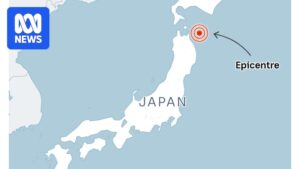
On Monday, August 11, Ukrainian Defense Intelligence (HUR) drones executed a strategic strike on the Orenburg Helium Plant, the sole facility in Russia producing helium—a critical component for missile manufacturing, space technology, and aviation. This operation, confirmed by Kyiv Post sources in HUR, represents a significant disruption to Russia’s military-industrial complex.
The Orenburg Helium Plant, located in the city of Orenburg in southern Russia’s Orenburg Oblast, lies approximately 1,200 kilometers (750 miles) from Ukraine’s front line. This facility is not only pivotal for Russia’s defense capabilities but also one of the largest helium processing plants in Europe, with an annual capacity of about 15 billion cubic meters of natural gas.
Impact of the Strike
Local residents reported seeing drones overhead, followed by a series of powerful explosions in the area surrounding the plant. In response, local authorities closed a section of the federal M-5 “Ural” highway near Perevolotsky and Kholodnye Klyuchi, the location of the targeted facility.
According to HUR sources, the plant’s output is extensively used in missile systems, satellite programs, and aerospace production. The strike is seen as a significant blow to Russia’s military capabilities, particularly its missile program, which relies heavily on helium as a component.
“The facility plays a direct role in Russia’s war against Ukraine, making it a legitimate military target under international law,” stated a source from Ukrainian Defense Intelligence.
Strategic Context and Previous Strikes
This development follows a recent report by the Kyiv Post regarding Ukraine’s Security Service (SBU) launching a precision drone strike on Russia’s Arzamas Instrument-Building Plant in Nizhny Novgorod. This facility is a key supplier of components for cruise missiles used in attacks on Ukrainian cities.
Nizhny Novgorod Oblast, located in central Russia northeast of Moscow, is about 760 kilometers (471 miles) from Ukraine’s border. The plant manufactures gyroscopic devices, control systems, onboard computers, and other components, including those used in Kh-32 and Kh-101 cruise missiles.
Expert Opinions and Historical Parallels
Experts suggest that these targeted strikes are part of a broader strategy by Ukraine to weaken Russia’s military infrastructure. By disrupting the supply chain of crucial components, Ukraine aims to diminish Russia’s offensive capabilities.
Historically, targeting industrial facilities that contribute to military efforts has been a tactic used in conflicts to undermine an adversary’s war effort. The strategic targeting of the Orenburg Helium Plant echoes similar strategies employed during World War II, where industrial sites were often targeted to disrupt enemy production capabilities.
Implications and Future Consequences
The move represents a calculated effort by Ukraine to leverage its technological capabilities in drone warfare, aiming to offset the numerical and resource advantages held by Russia. The disruption of helium production could have far-reaching implications, potentially affecting not only military applications but also Russia’s space and aviation sectors.
Looking forward, this strike may prompt Russia to reassess the security of its critical infrastructure and possibly lead to increased defensive measures around key industrial sites. Additionally, the international community will be closely monitoring the situation, as such actions could escalate tensions further.
As the conflict continues, the strategic use of technology and intelligence by Ukraine highlights the evolving nature of modern warfare, where precision and disruption are becoming as crucial as traditional military might.






